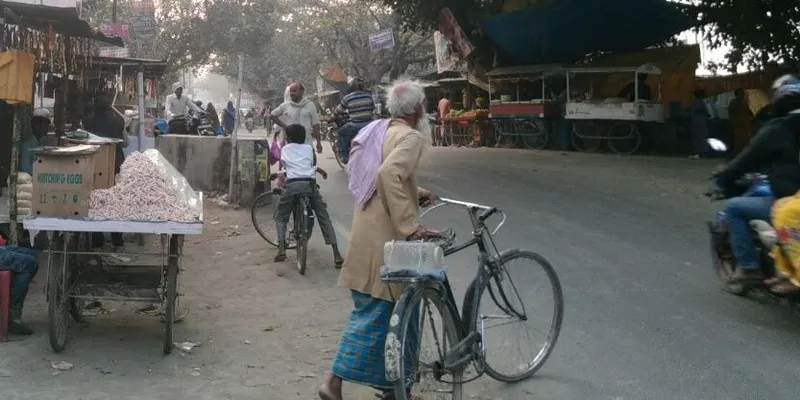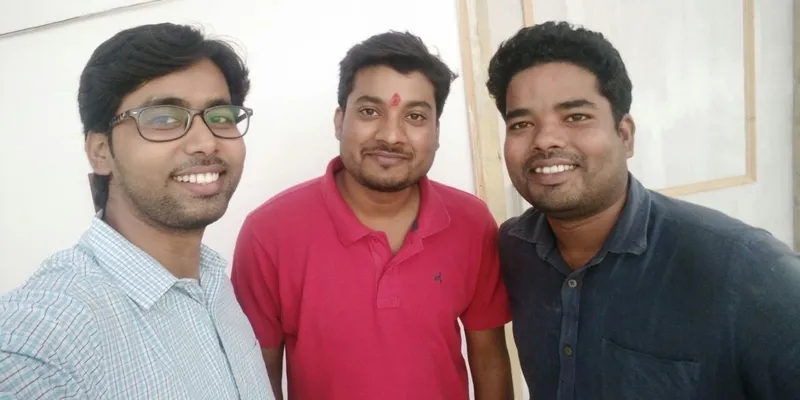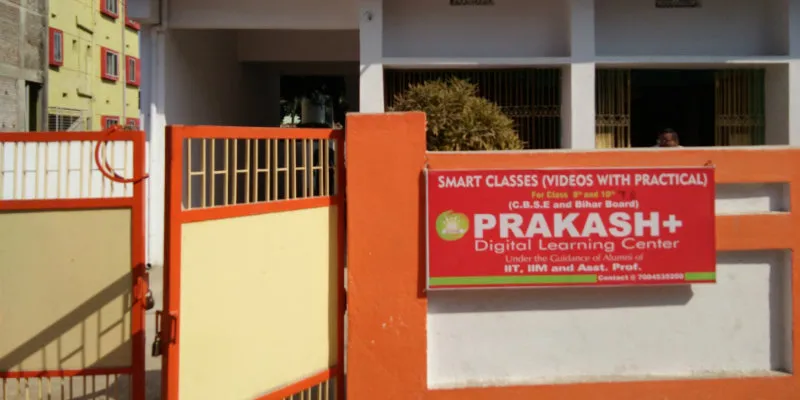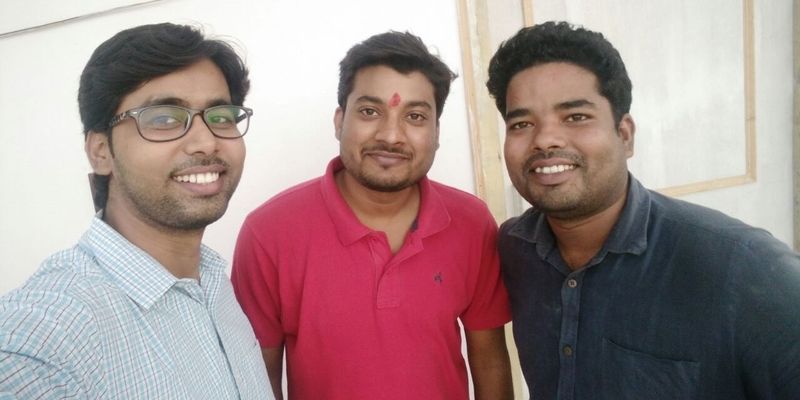Why this IIT and IIM grad left a 7-digit salary to educate the underprivileged in the hinterland of Bihar
After an 180-km journey from Patna, I arrive in Bhore, a tehsil roughly 45 km from district headquarters Gopalganj, in the early afternoon. A 10-minute stroll from the bus depot takes me to Prakash Academy’s learning centre, located on Bhore’s main road. The man I have come to meet, 28-year-old Pramod Kumar, stands at the head of a class of 20 students, ranging from the 8th to 10th standards, explaining the concept of light with the help of a projector and YouTube.

I am struck by the overwhelming level of student interaction in the class, especially given its rural location, as Pramod elaborates on the nature of radio waves and x-rays — questions like why we can’t see infrared rays and how UV rays trigger the ionisation of atoms keep popping up. It is not hard for one to see how much of an impact Pramod, a former IITian with IIM pedigree as well, has been able to make here in Bhore.
The backstory
Born in Bihar, Pramod lost his father, an engineer with the state’s Rural Engineering Works (REO), when he was only three months old. Following the tragic incident, his mother had to take up a job as a peon as she wasn’t qualified to secure any higher post. Pramod was admitted to a government-run school in Hajipur (district headquarters of Vaishali, 25 km away from state capital Patna). Pramod says,
Like many other childhood friends, I didn’t get a chance to wear a tie and go to an English medium school.
However, Pramod didn’t let his humble background restrain him, and he scored a distinction in his senior and higher secondary exams. After his 12th, Pramod appeared for the Career Point (a Kota-based coaching institute that helps aspiring students crack the IIT exam) screening test in 2006. “I cleared the test and also won a 50 percent scholarship," he says
This was an inflection point in Pramod's career.
A year later, Pramod cracked the IIT exam and chose IIT (BHU), Varanasi to complete an integrated course (Btech plus Mtech) in the ceramic engineering branch.
After completing five years at IIT - BHU (2007-12), Pramod appeared for the CAT exam in 2012 and cracked it. He gained admission to IIM Kozhikode and joined HCL Technologies in the capacity of a senior manager two years later. However, he had to leave the job owing to health issues. Pramod recalls,
After leaving HCL, I came to my hometown for a few months. During that time, I started helping IIT-JEE aspirants in my locality. This revealed to me the reality that a majority of these students weren’t able to solve even simple calculations.
Everything happens for the best: Tryst with an abusive boss
Three months later, Pramod received an offer from Quality Group in Tanzania to join as executive assistant to the group’s CEO. “I said yes as I had to repay my education loan,” he adds. Soon after joining, he realised that the CEO had some serious problems with his accent in English. Pramod says,
I initially ignored it for the first few months, but he kept humiliating me for no reason. While my accent wasn’t bad, it was certainly influenced to an extent by my mother tongue.
The humiliation got him thinking about the millions of students in his state who weren’t good at English and other crucial subjects. “Somewhere in the second half of March last year, I felt dejected when the CEO hurled abuse at me for not having a ‘cool accent’, and that day, I decided to quit,” says Pramod, his tone heavy.

By the end of March, Pramod flew back to India with a mission to educate students in the hinterland of Bihar. “I started my first centre at Bhore with eight students. Soon, word of mouth worked, and more students joined,” he says.

A pressing need
Bhore is one of the more remote locations of the district, with a majority of its families either engaged in agriculture or with relatives working in the real estate sector in the Middle East. Apart from government-run schools, the tehsil lacks quality educational institutions, the nearest CBSE-affiliated school being about 35 km away. Most of the government-run schools, not only in the region but in the state as well, are heavily understaffed, particularly with regard to the subjects of science, mathematics and English.
The scarcity of teachers in these subjects makes it hard for students in the region to get through their board exams. According to the students and parents of Bhore, little more than 40 percent of students who appear for the board exams make it through, and the highest number fail in maths and science.
In this backdrop, Pramod and Prakash Academy’s mission of imparting superior skill in maths, science and English acquires a great deal of relevance. The organisation has three centres spread across two districts of Bihar — Gopalganj and Vaishali — each of which was visited by YourStory.
Birds of a feather flock together
Meanwhile, Pramod was desperately looking for co-founders with backgrounds in the tech and academic disciplines. In June, he met Kaushik Sharaf by leveraging IIM jobs. Kaushik was also exploring opportunities to start his own venture. An electronics engineer from BIT Mesra, he had previously worked with Uber India and was a part of Prashant Kishore’s camp, which had engineered the landslide victory of the Nitish Kumar-led alliance in the state assembly elections of 2015.
“I evaluated the opportunity and it enticed me. Importantly, Pramod’s passion for what he was doing influenced me tremendously,” says 25-year-old Kaushik. Early in July, Kaushik joined Prakash Academy.

A few days later, Pramod connected with Aman Singh, one of his juniors in school, who was teaching engineering grads students in MITS, Bikaner. “We exchanged notes on Facebook, and Aman showed an interest in our endeavour. After a series of conference and Skype calls, Aman moved to Bhore to join us,” says Pramod.
Devising business models for survival
Now that a well-rounded founding team was set, the trio began looking to open more centres. However, they were met with financial challenges in expansion. By then, Prakash Academy had about 35 students in Bhore. Pramod recalls,
About 40 percent of our students weren’t even able to pay Rs 100 for after-school classes. This was a setback for us.
Later, they devised two models - one for profit (in semi-urban or urban areas) and another that was not (in rural areas, with a Rs 100 monthly fee).
With regard to the for-profit approach, the trio adopted two separate revenue models. In the first model, Prakash Academy will provide services to schools located in remote areas where quality teachers are hard to find. Pramod says,
Through the use of video conferencing, classes will be held from a central location for up to 10 schools at a time.
Highly qualified teachers from IIT and other such colleges will boost the knowledge level of students in the areas of mathematics, English and science. Through the second model, the academy is opening after-school centres in tier-2 and tie-3 towns, where classes will be executed through a mix of offline and video conferencing. The fees at these centres will be fixed at Rs 500 per month. [H15]
Currently, Prakash Academy has one profit centre at SDO Road, Hajipur. Currently, about 30 students are enrolled in the two-month-old centre.

Impact on the ground
Chandani Kumari (15) is readying herself for her upcoming board exams. She studies in Government High School, Hajipur. She has been a regular at Prakash Academy’s digital learning centre for the past two months. She says, “The approach of Pramod and Aman sir towards teaching maths and science is altogether different from my school teachers.” But what exactly makes their approach different? Chandani replies,
They use video and audio content to makes us understand how crucial concepts like prisms, projectiles, lenses and chemical reactions actually work. On top of that, we can ask them queries any time between 8 am and 8 pm through Skype.
Prakash Academy leverages projectors and a variety of content available on YouTube at each of its learning centres.
Leveraging tech
The academy uses Skype for Business to facilitate on-demand concept clarification for students. Skype for Business has many tools that simple Skype lacks. One of the brilliant features that are being leveraged at Prakash Academy is the ability to share collaborative whiteboards. Via this feature, students can see what the other person is writing. Kaushi explains,
Combined with digital pen and tablet, this feature enables us to teach remotely from any location. At the same time, teacher and student can see and talk to each other.
The art of bootstrapping and the road ahead
So far, the company is bootstrapped and has no plans to raise funding. On being asked why Prakash Academy isn’t actively looking for funds, the trio says, “We have the ability to sustain the business through our profit-seeking model. Later, as we scale, we may explore chances of funding.”
With 110 students across their three operative learning centres, Prakash Academy has a plan to bring 5,000 paying students under its umbrella by the end of this year. Pramod says,
Besides opening our own learning centres, we’re rolling out virtual classrooms remotely from our central hub through video-conferencing and Skype for business.
The academy is leveraging technology in the best possible way for the benefit of the underprivileged. Pramod concludes,
Through a combination of software and hardware, we are able to conduct classes in areas that are hard to reach even through vehicles. As quality education is lacking in these areas, with well-qualified teachers unwilling to relocate to them, technology was the only choice.






